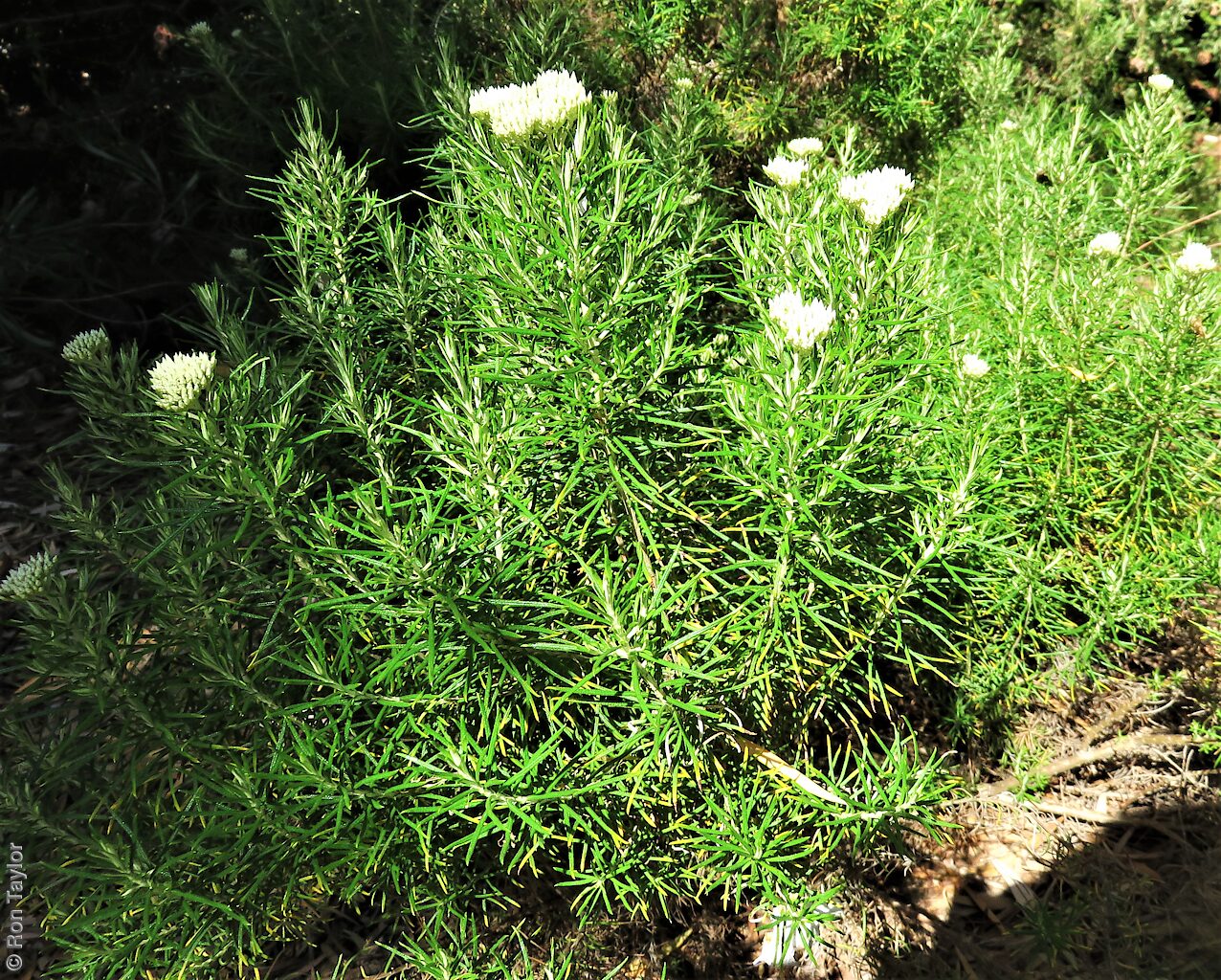
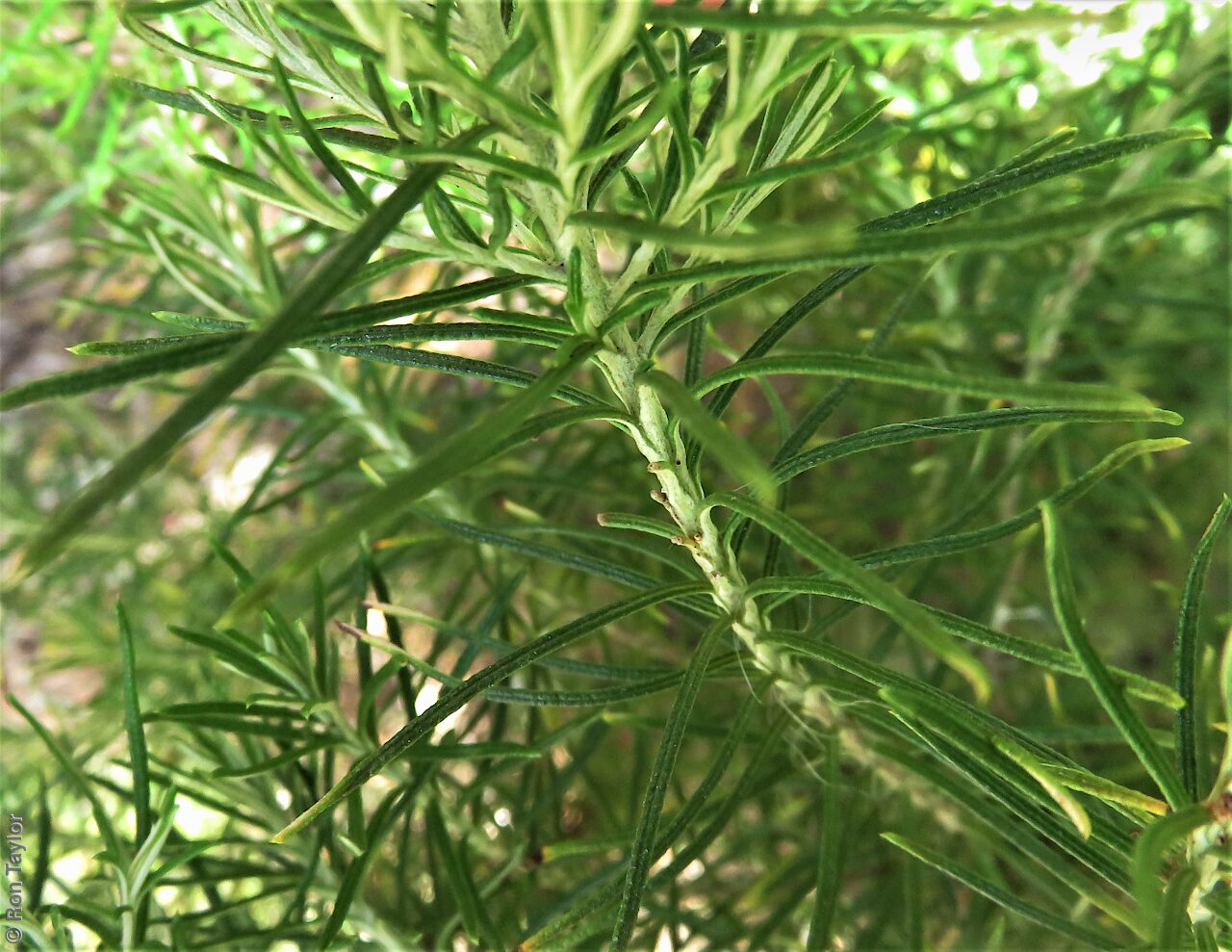
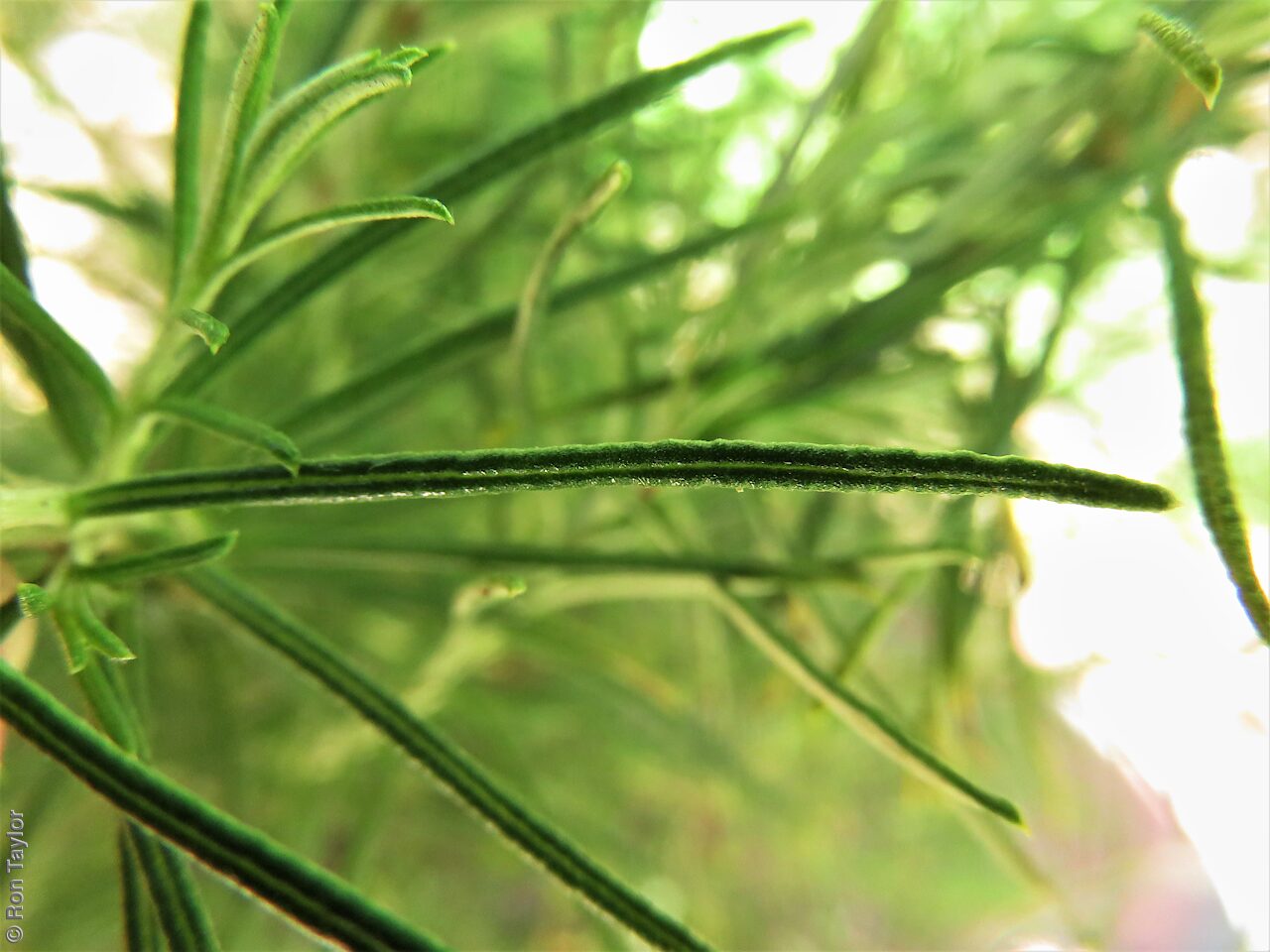
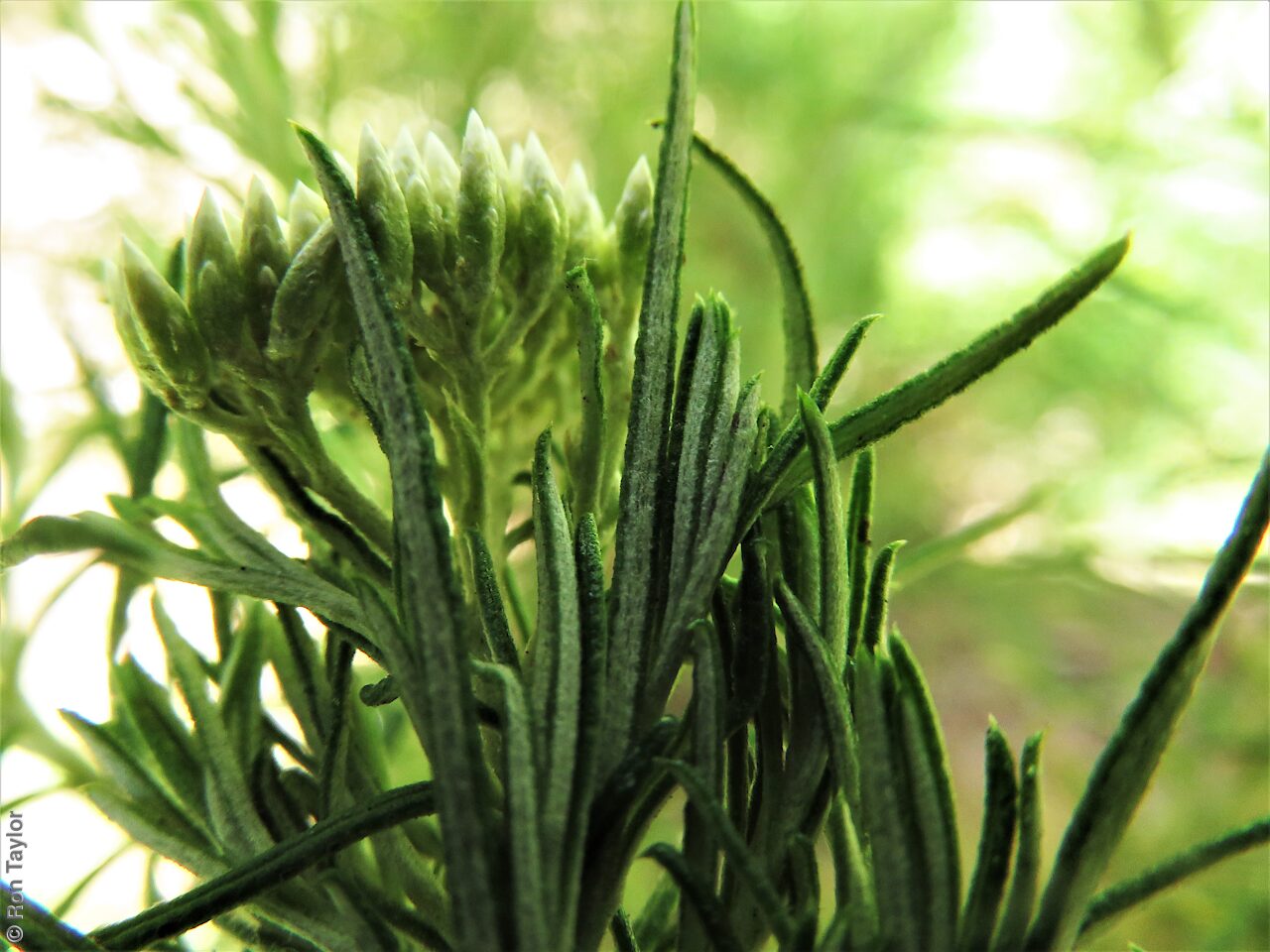
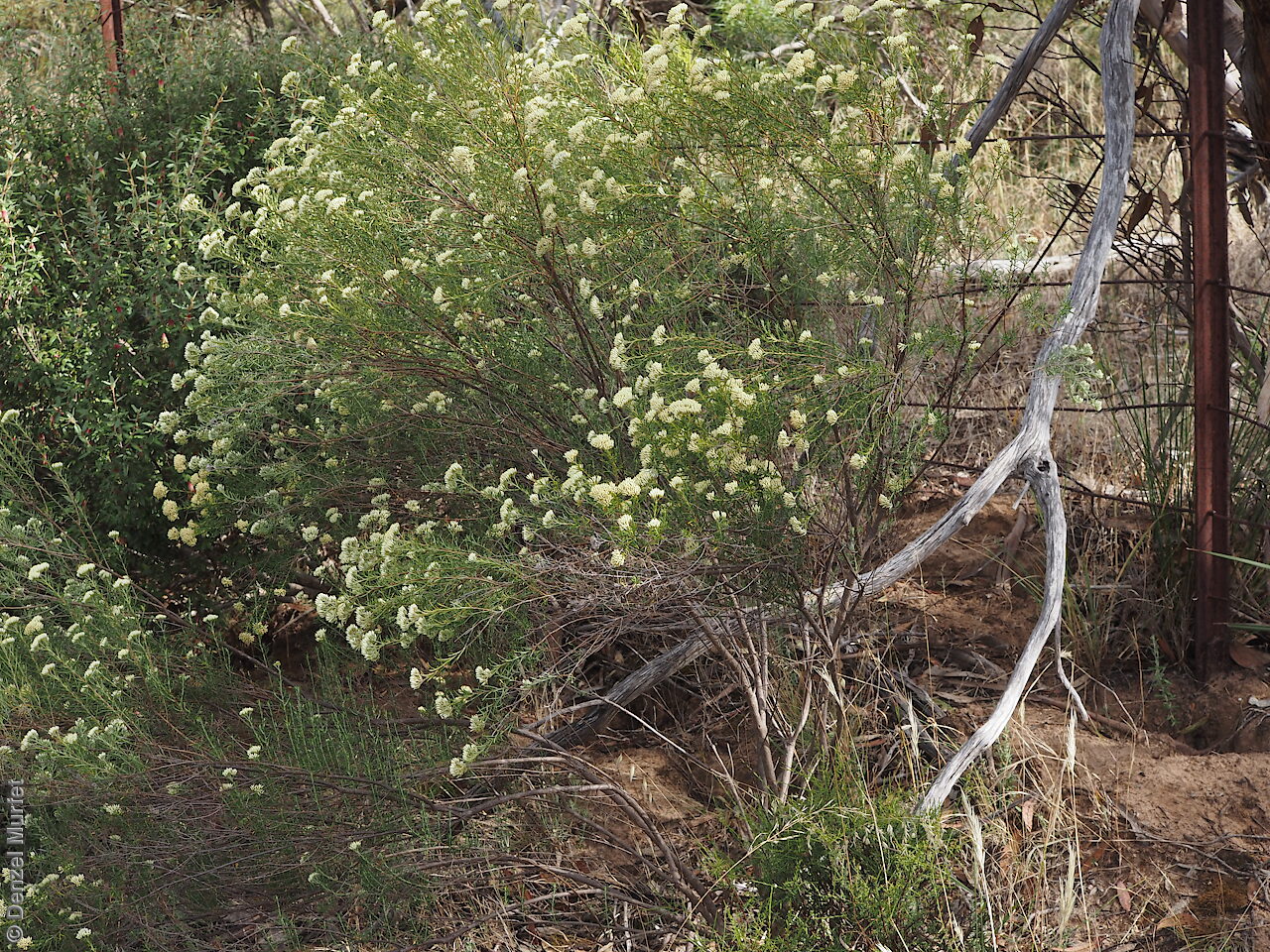
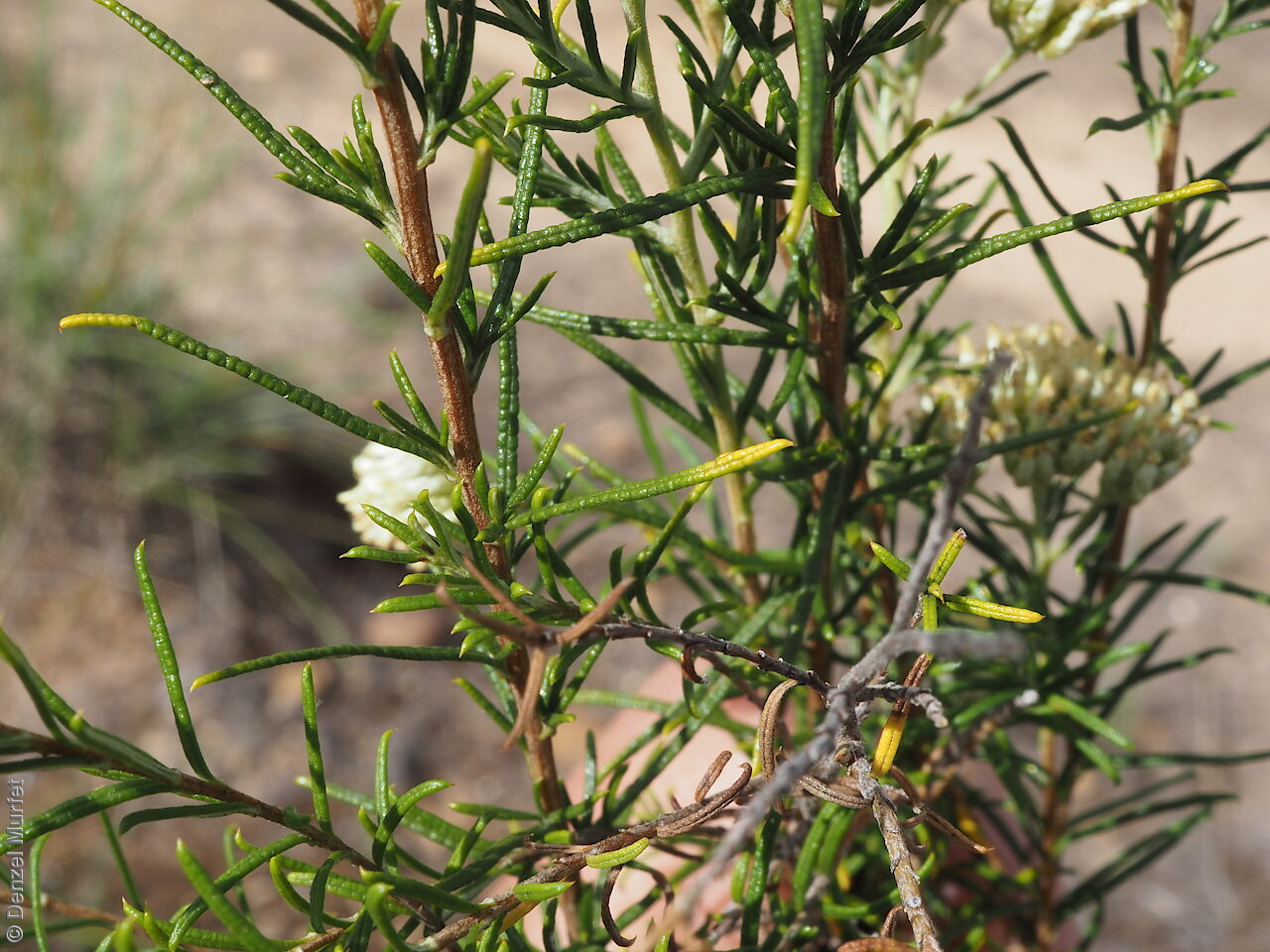
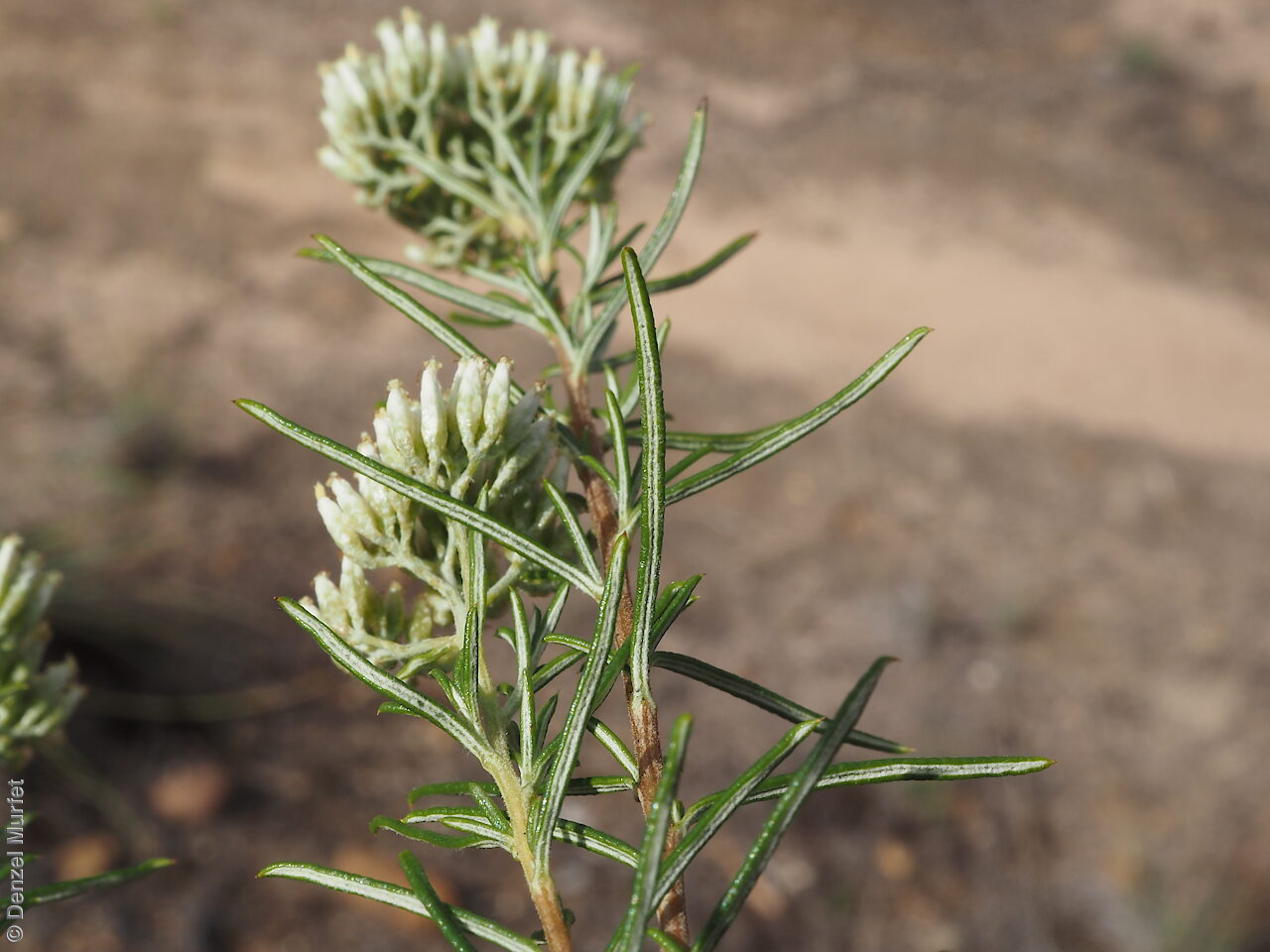
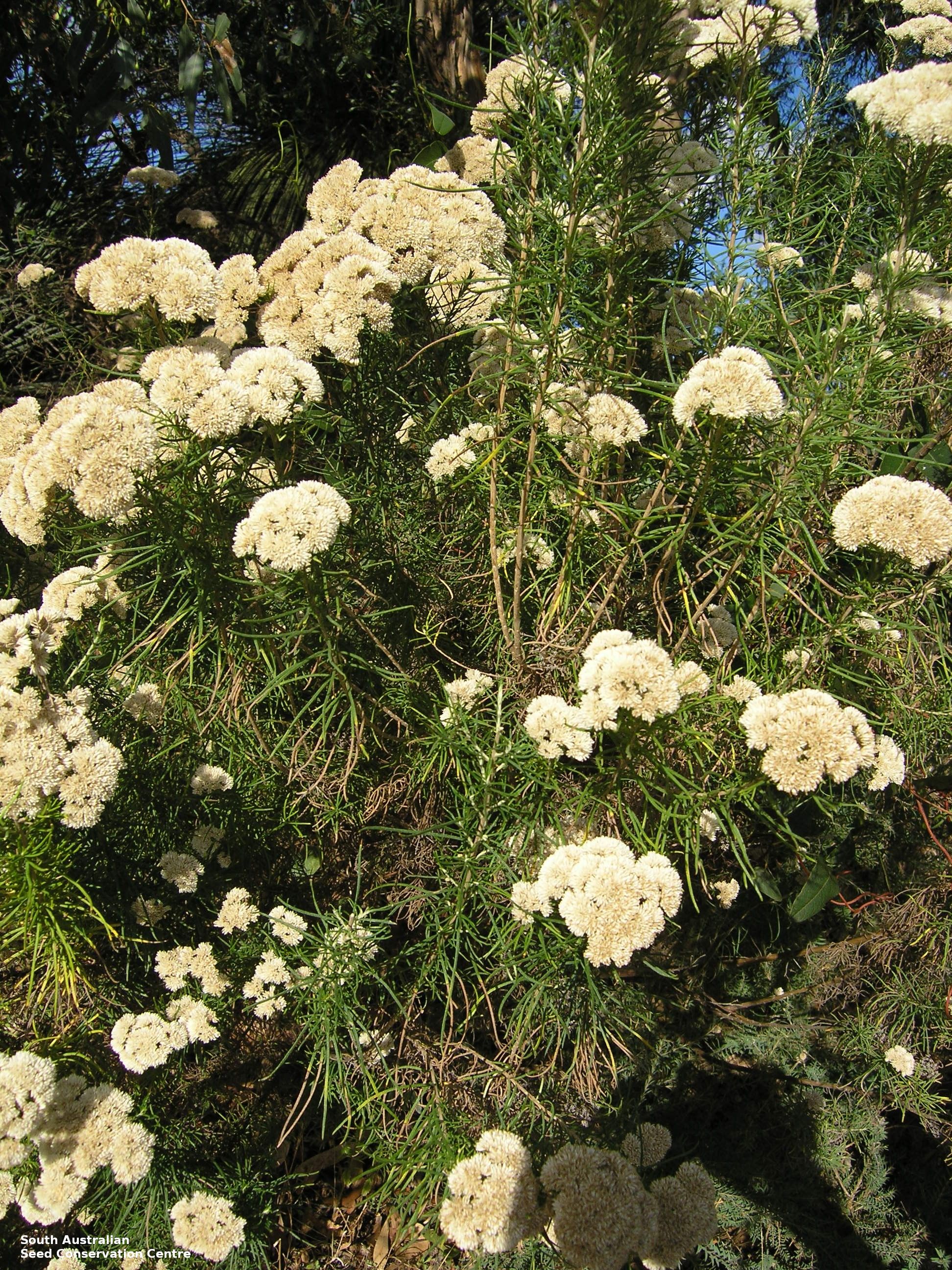
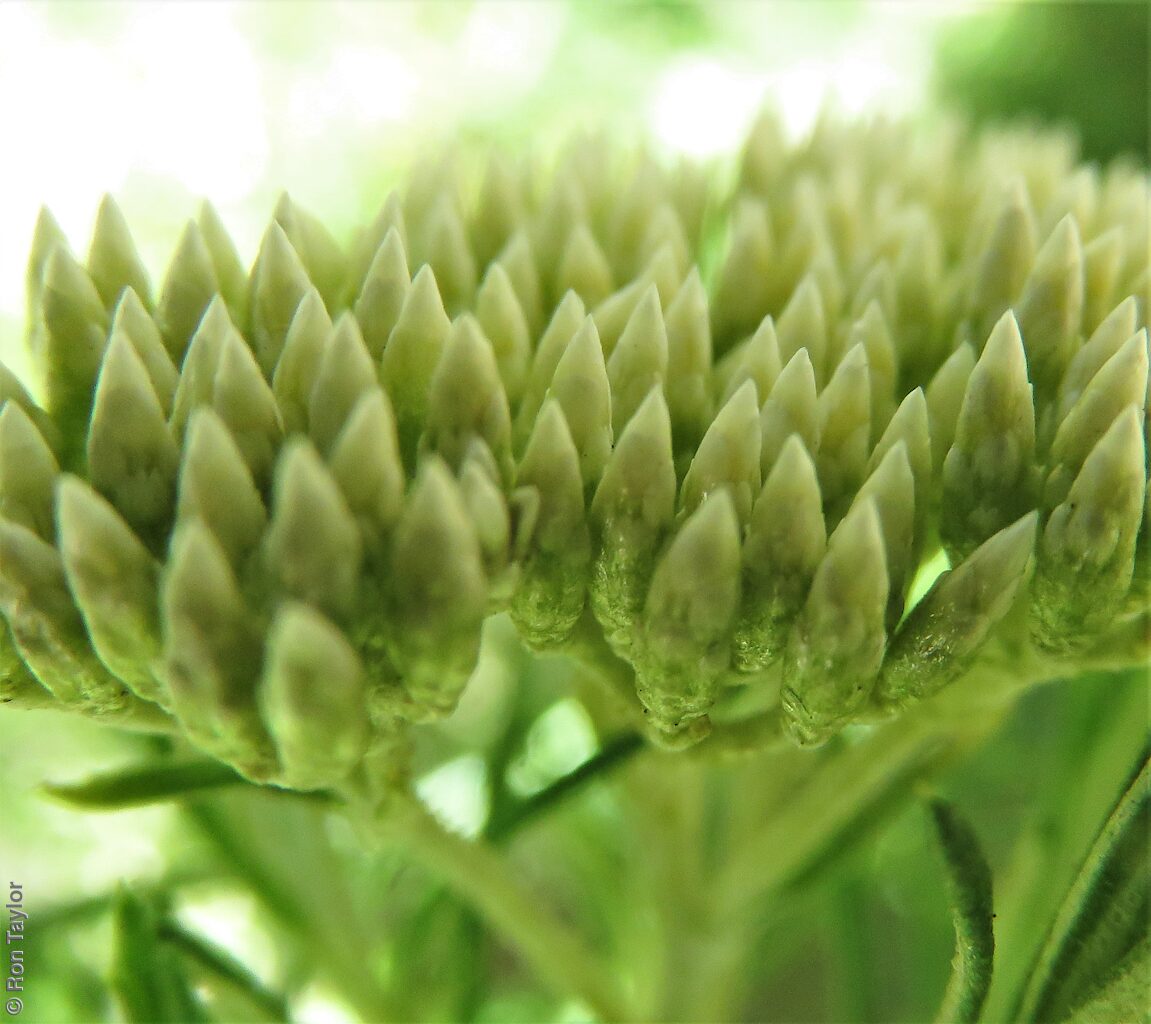
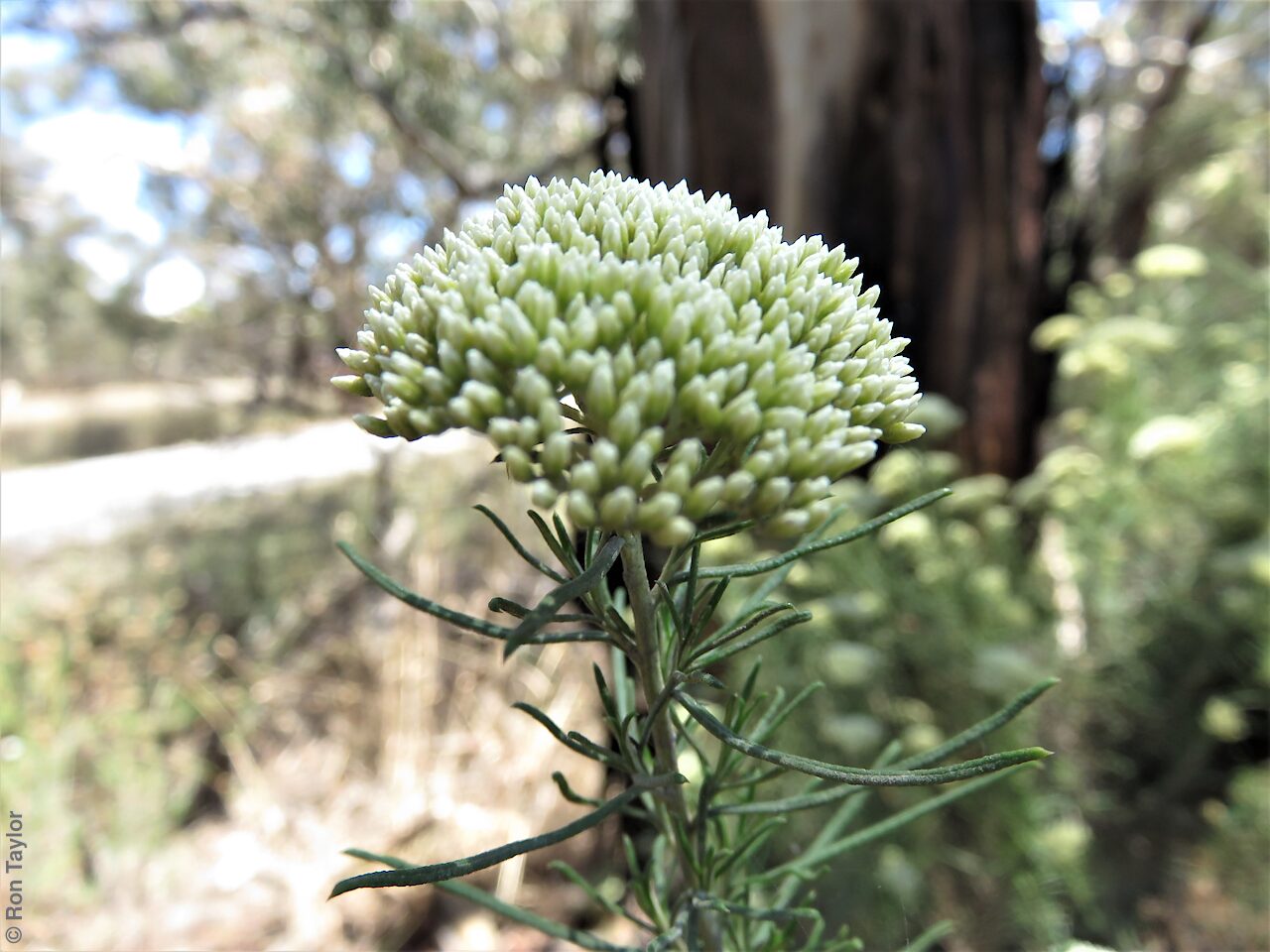
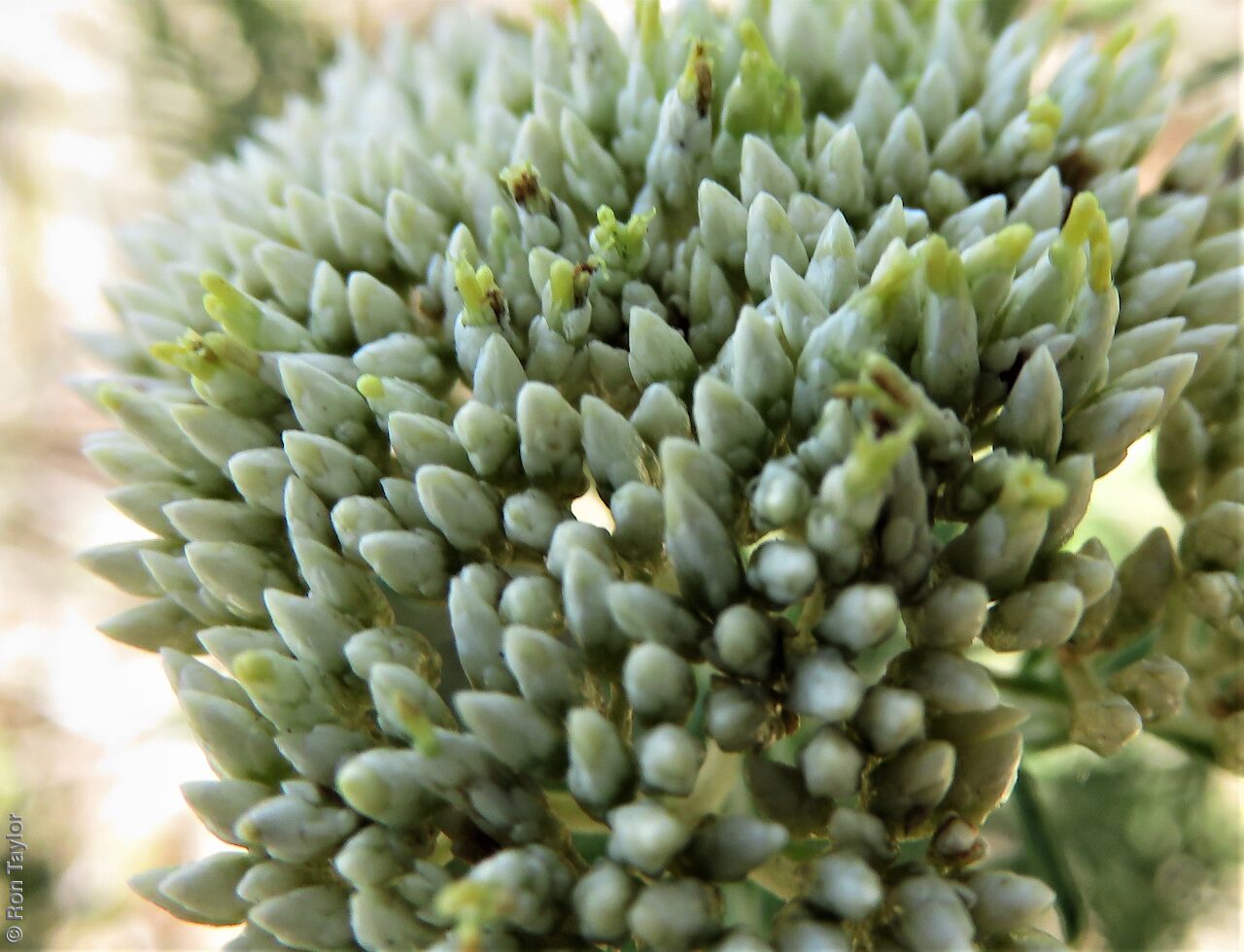
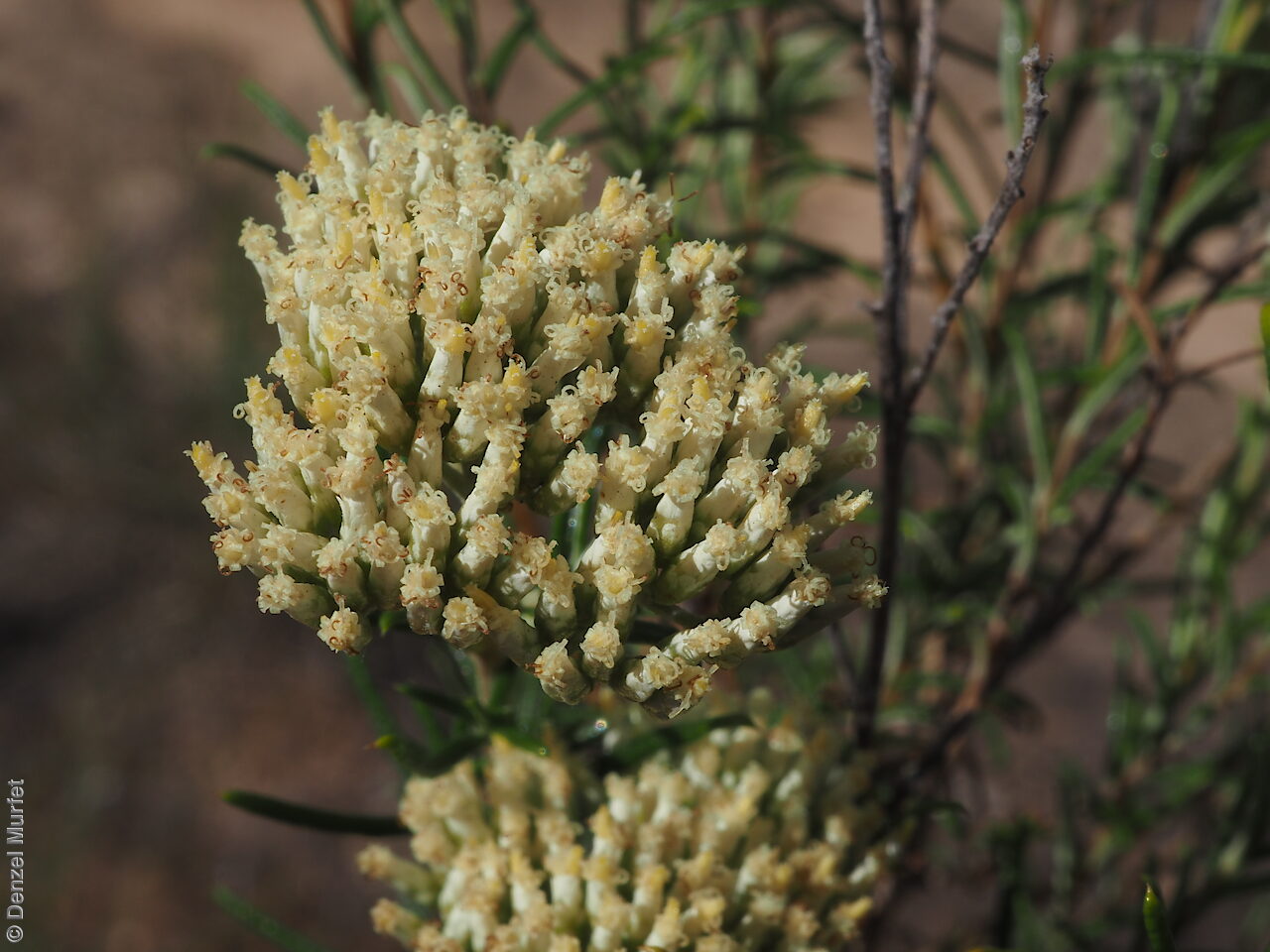
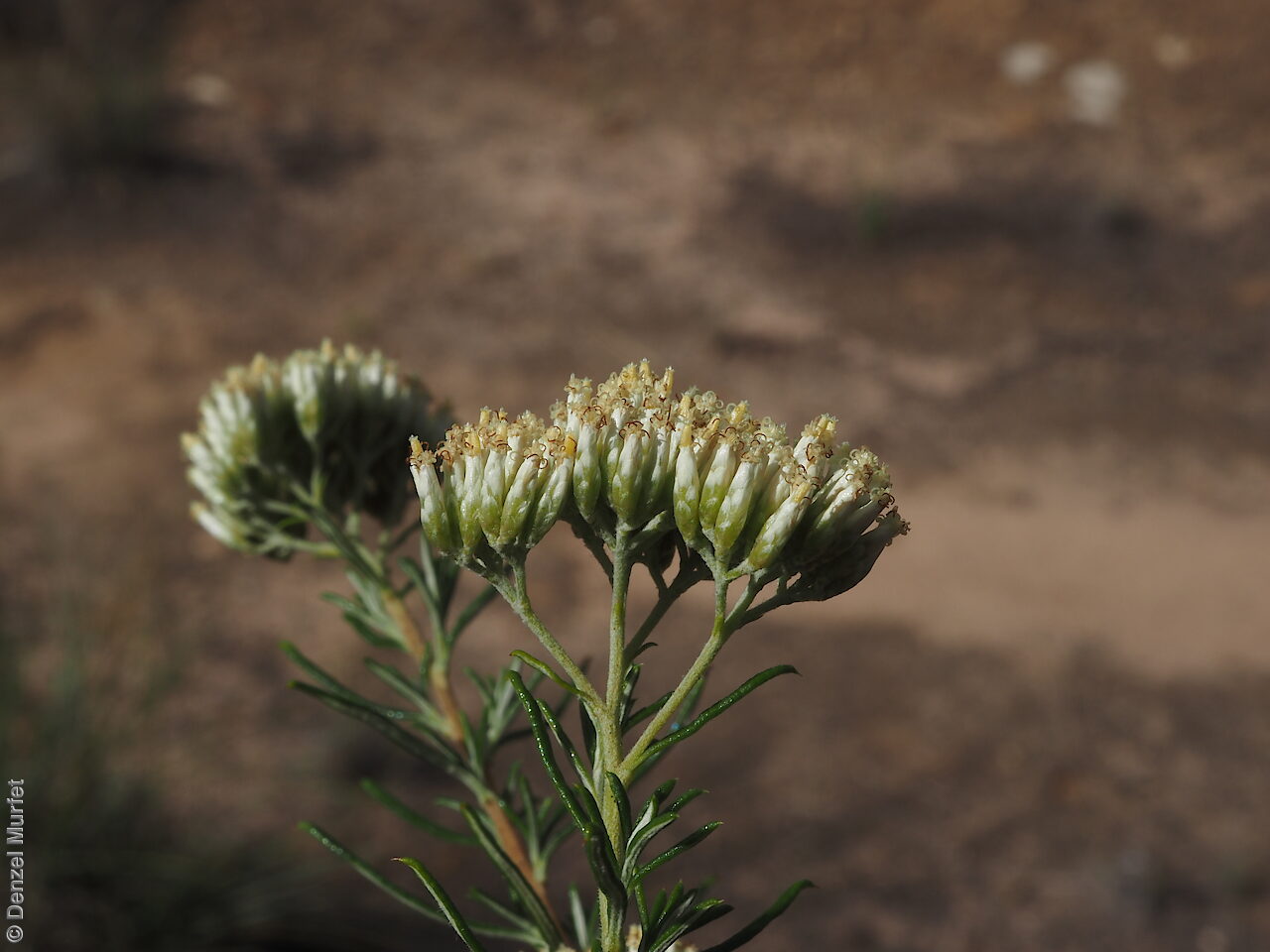
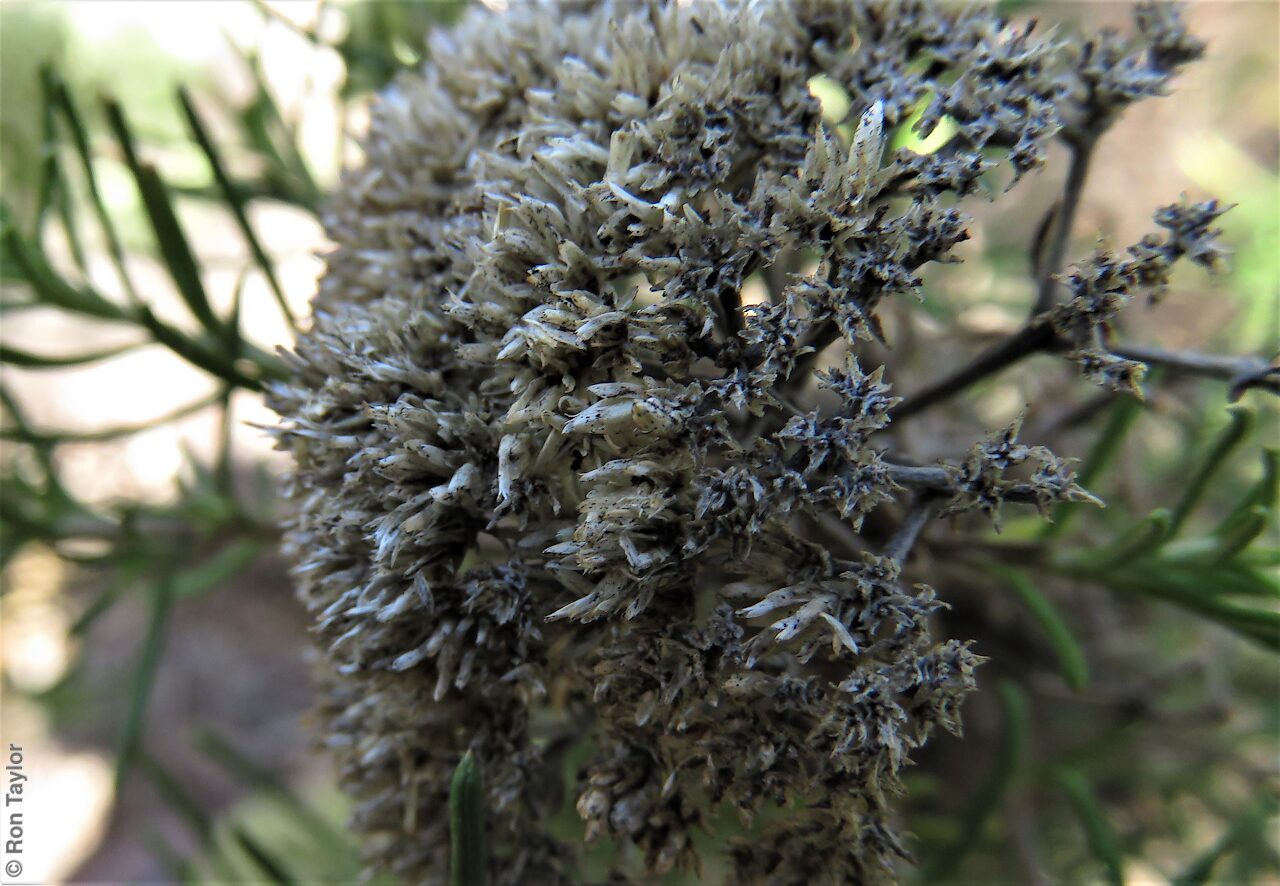
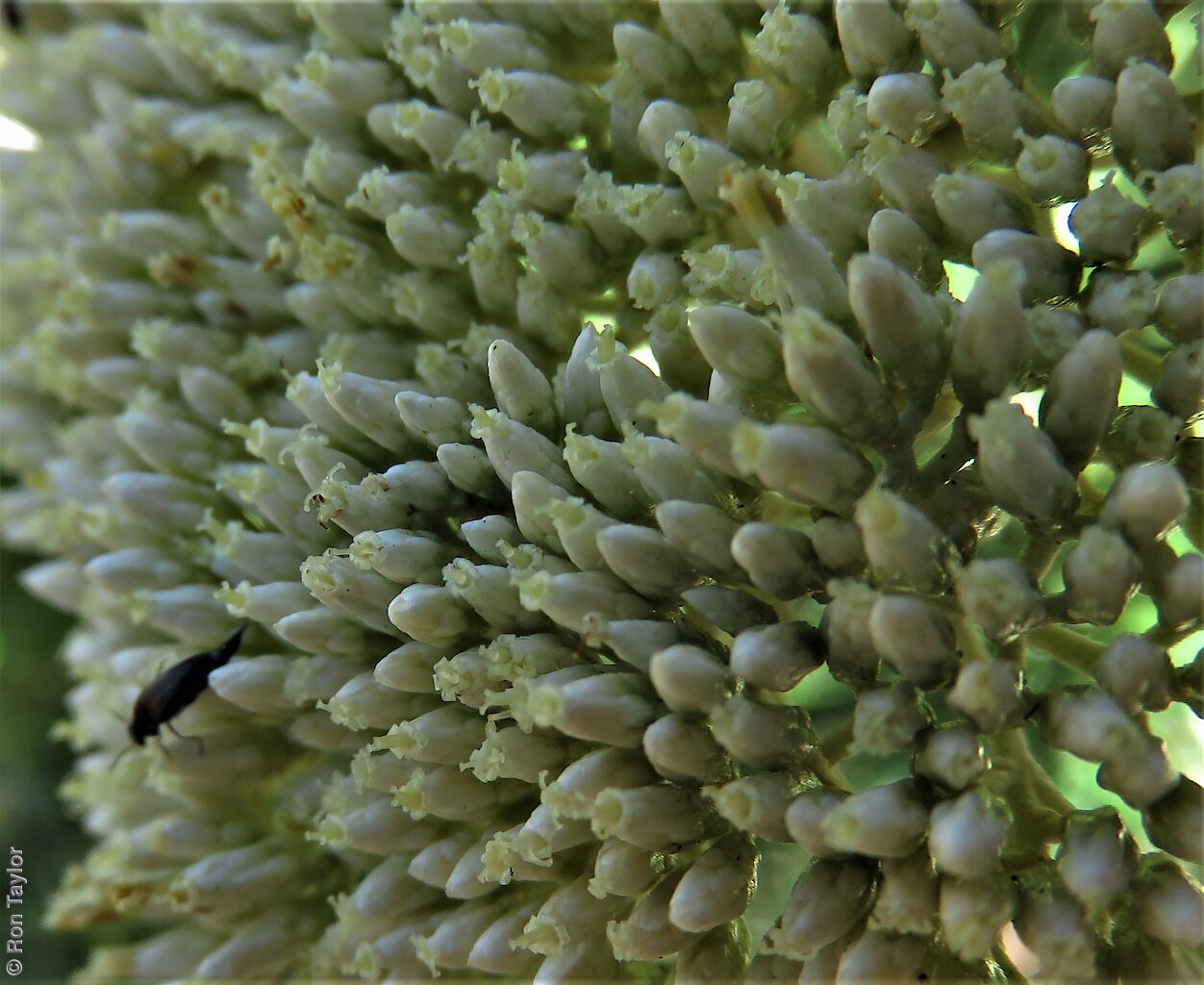
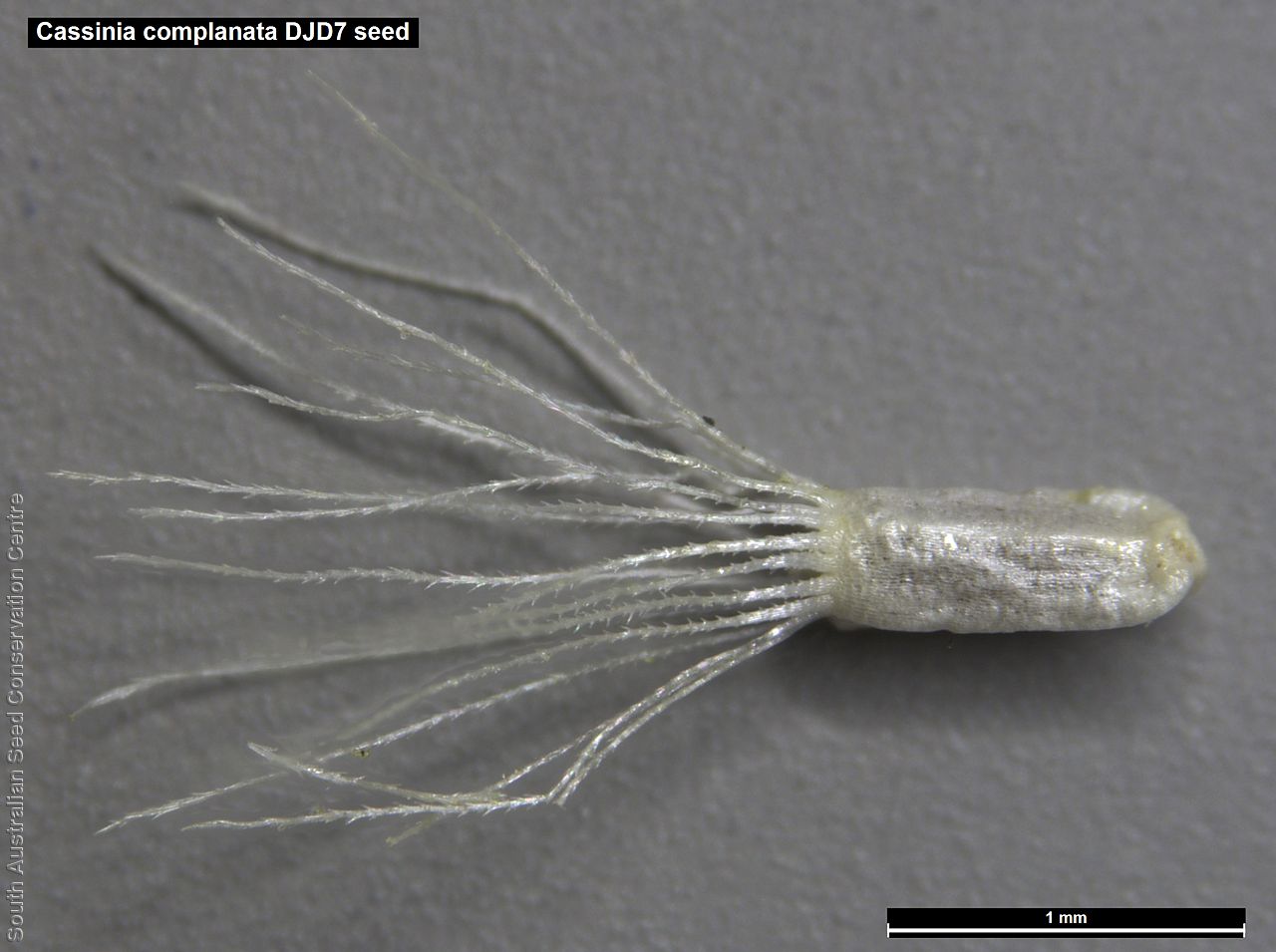
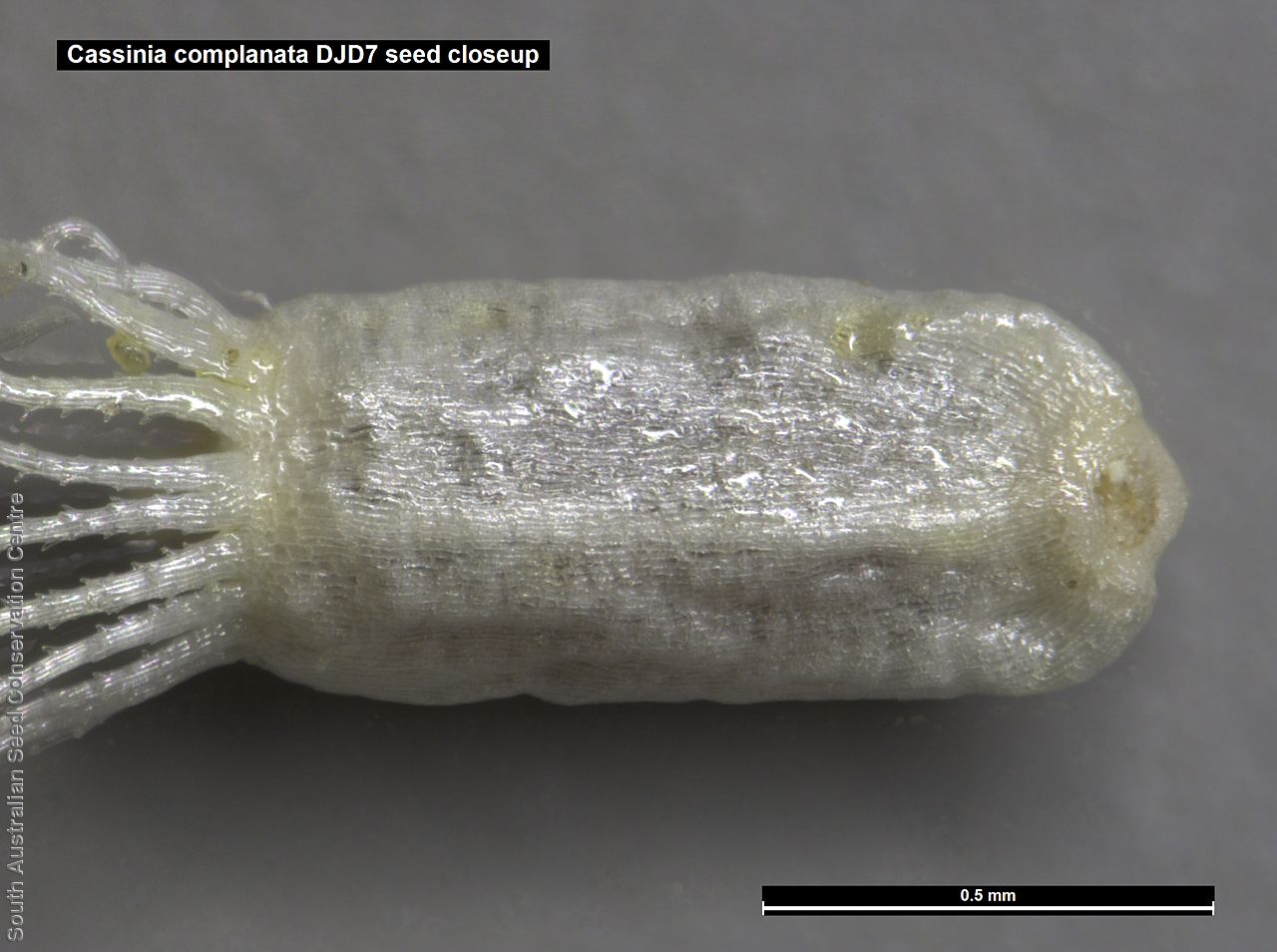
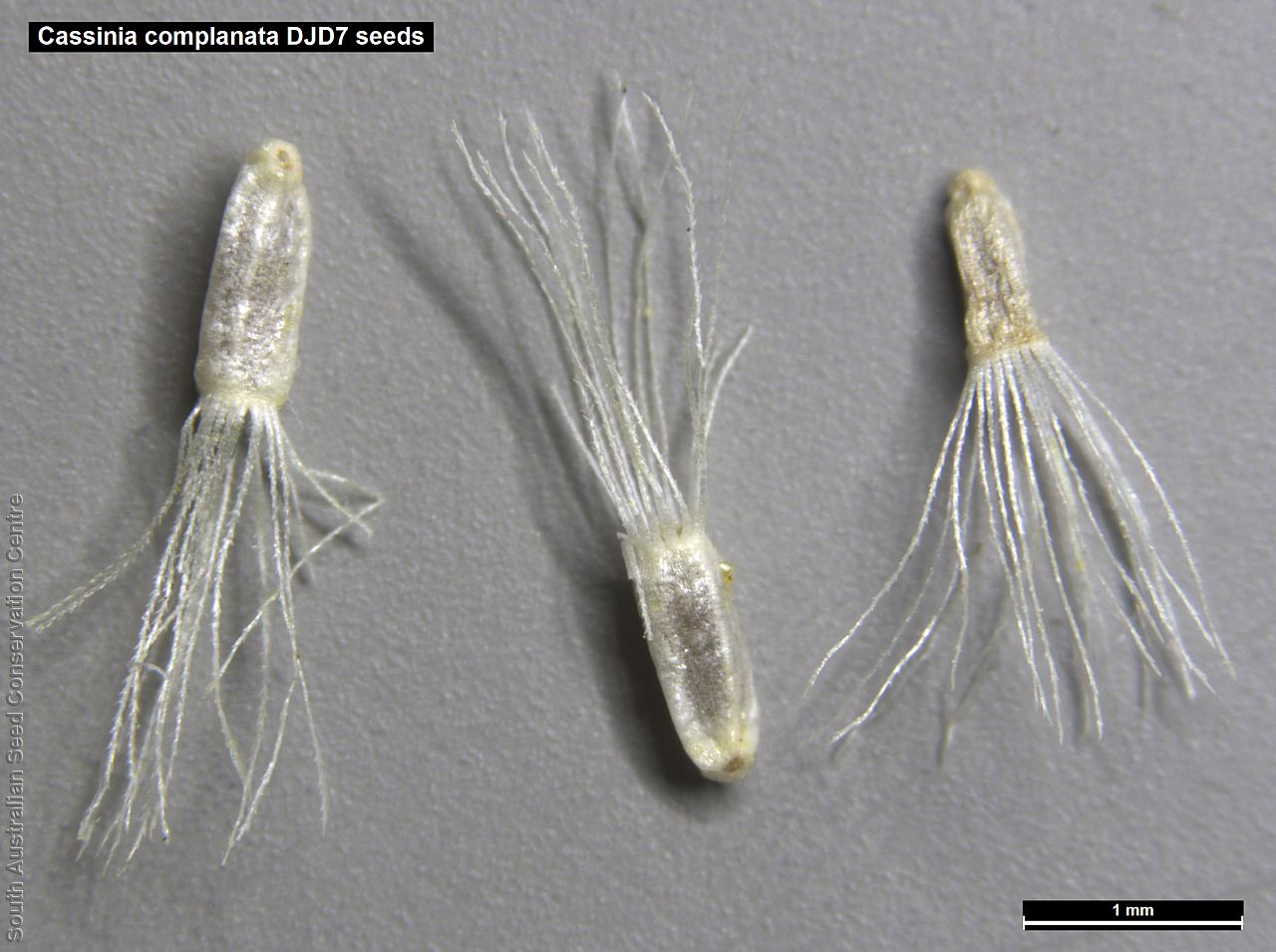

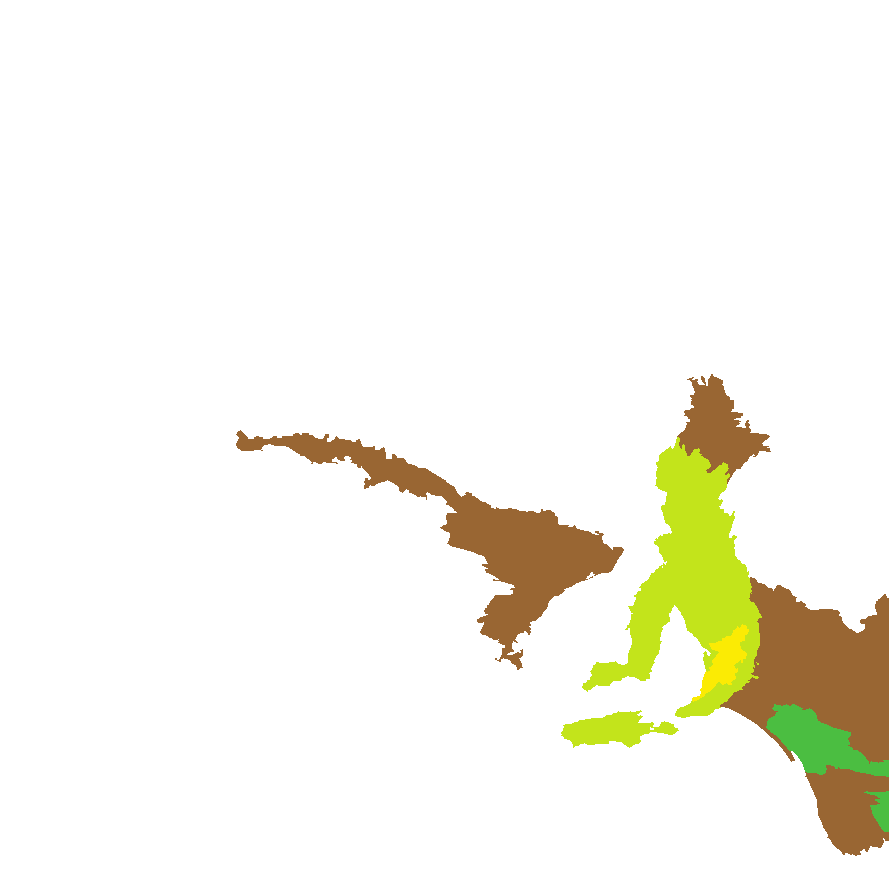
Botanical art
Etymology
Cassinia named after Alexandre-Henri Gabriel de Cassini (1782-1832), a French botanist who published extensively on the Compositae family. Complanata from the Latin 'complano', meaning levelled or flattened, referring to the flattened flower clusters.
Distribution and status
Found southern South Australia from the Flinders Ranges to the upper South-east growing in mallee and woodland on sandy soils. Also found in Victoria. Native. Common in South Australia. Common in Victoria.
Herbarium regions: Flinders Ranges, Eyre Peninsula, Northern Lofty, Murray, Yorke Peninsula, Southern Lofty, Kangaroo Island, South Eastern, Green Adelaide
NRM regions: Adelaide and Mount Lofty Ranges, Eyre Peninsula, Kangaroo Island, Northern and Yorke, South Australian Arid Lands, South Australian Murray-Darling Basin, South East
AVH map: SA distribution map (external link)
Plant description
Erect or semi- erect shrub to 2 m high; branchlets sticky with moderately dense, spreading hairs. Leaves semi-erect to spreading, sessile, narrowly linear to terete, to 50 mm long and 1 mm wide, glabrous or with sparse to moderately dense short hairs above, dense white cottony hairs matted with yellowish resin beneath, apex tapering to an acute point, margins revolute to midrib. Inflorescences dense flattened clusters at end of stems, with white, greenish based flowers. Flowering between January and February. Fruits are light cream, dense round daisy-head. Seeds are creamy-brown cylindrical seed to 1.1 mm long and 0.4 mm wide; smooth with long white pappus at one end. Seed embryo type is spatulate.
Seed collection and propagation
Collect seeds between March and May. Collect heads that are matured, cream and contain brown seeds. Place the heads in a tray for one to two week to dry. Then rub the heads gently with your hands to dislodge the seeds. Use a sieve to separate any unwanted material. Viable seeds will be small and brown. Store the seeds with a desiccant such as dried silica beads or dry rice, in an air tight container in a cool and dry place. Seeds are non-dormant, viable seed should germinate readily.
| Location | No. of seeds (weight grams) | Number of plants | Date collected | Collection number Collection location | Date stored | % Viability | Storage temperature |
|---|---|---|---|---|---|---|---|
| BGA MSB | 531,800 (81.9 g) 531,800 (81.9 g) | 37 | 28-Apr-2004 | DJD7 Southern Lofty | 23-Mar-2006 | -18°C | |
| BGA | 180,000 (13.51 g) | 9 | 24-Apr-2012 | KHB668 Southern Lofty | 1-Jan-2016 | 30% | -18°C |
Number of plants: This is the number of plants from which the seeds were collected.
Collection location: The Herbarium of South Australia's region name.
% Viability: Percentage of filled healthy seeds determined by a cut test or x-ray.